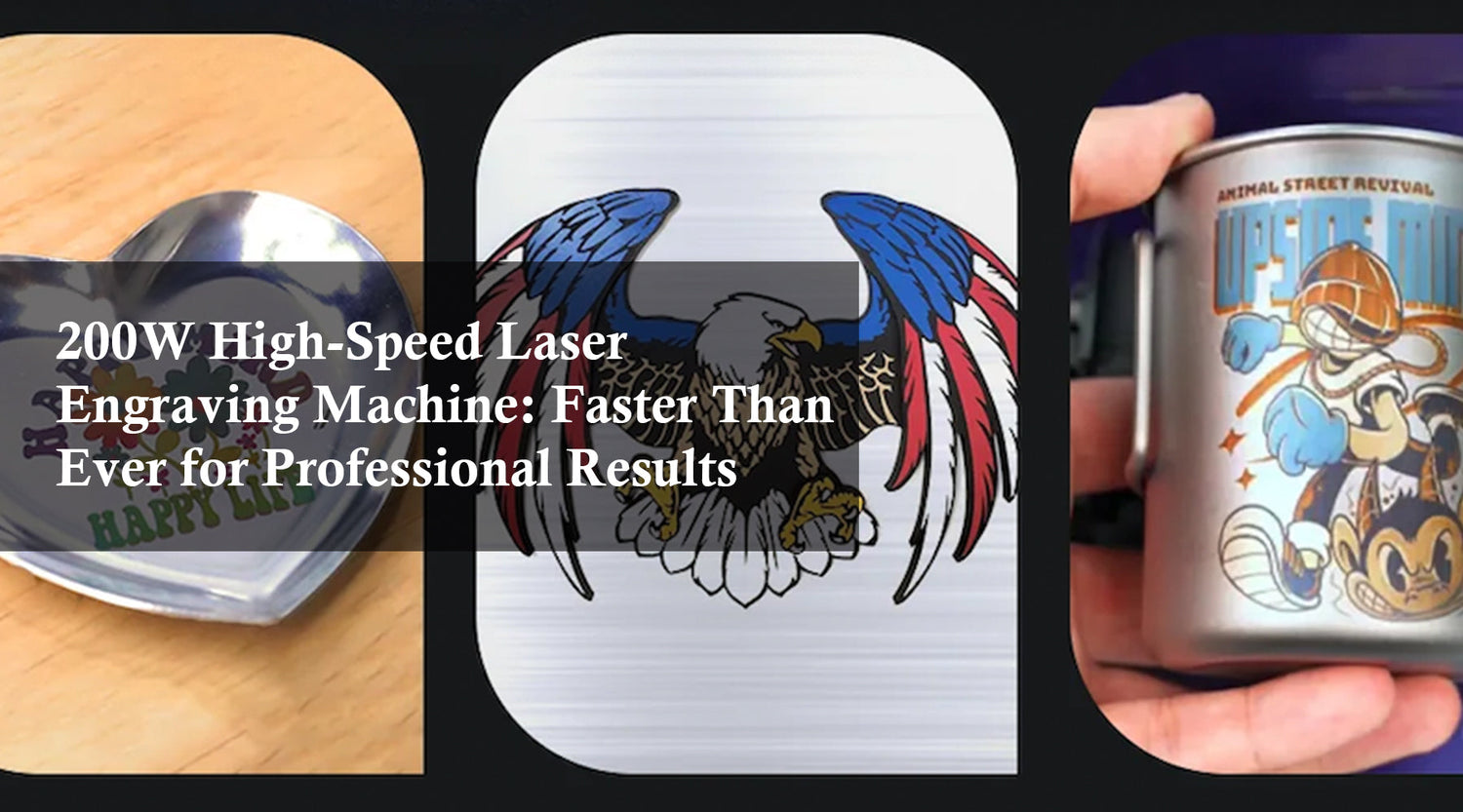Have you ever looked at a humble piece of plastic and imagined if only it could tell a story, capture a moment or embody an idea. Can it transcend its mundane existence and become a work of art? Well, dear readers, we can turn these assumptions into reality with the help of laser engraving machines, using monport engraving machines to engrave plastic for various industries to enhance their functionality and aesthetics. Get ready to witness the magic as we explore the infinite frontiers of engraved plastic. Buckle up because this ride will spark your imagination on a wild ride of engraving on plastic!
Common types of plastic materials
Plastics are versatile materials that have revolutionized countless industries due to their flexibility, durability, and affordability. Let's take a brief overview of some common types of plastic materials and their characteristics:
Acrylic (PMMA - Polymethyl Methacrylate):
Characteristics: Acrylic is transparent, lightweight, and resistant to shattering, making it an ideal alternative to glass. It's also known for its excellent optical clarity.
Uses: Acrylic is widely used in signage, displays, protective barriers, lighting fixtures, and various decorative applications due to its clarity and ease of engraving.

Polycarbonate (PC):
Characteristics: Polycarbonate is exceptionally strong, impact-resistant, and heat-resistant. It also maintains optical clarity, albeit slightly less than acrylic.
Uses: Polycarbonate finds applications in bulletproof windows, safety goggles, automotive components, electronic housings, and sports equipment where impact resistance is crucial.

Polyethylene (PE):
Characteristics: Polyethylene is lightweight, flexible, and resistant to chemicals and moisture. It comes in various densities, including low-density polyethylene (LDPE) and high-density polyethylene (HDPE).
Uses: LDPE is commonly used in packaging films, plastic bags, and squeeze bottles, while HDPE is preferred for pipes, containers, and household products due to its sturdiness.

Polypropylene (PP):
Characteristics: Polypropylene is tough, heat-resistant, and has a high melting point, making it suitable for both hot and cold applications. It's also relatively inexpensive.
Uses: PP is extensively used in food packaging, medical devices, automotive parts, laboratory equipment, and textiles due to its chemical resistance and durability.

Polyethylene Terephthalate (PET):
Characteristics: PET is transparent, lightweight, and has excellent barrier properties against moisture and gases. It's also recyclable.
Uses: PET is predominantly used in beverage bottles, food packaging, polyester fibers for textiles, and thermal insulation materials.

These are just a few examples of the diverse range of plastics available, each with its own unique properties and applications. When you engrave plastic, the choice of material depends on factors such as desired aesthetic, durability, and intended use of the finished product.
Select right laser engraving machine for engraving on plastic
When it comes to selecting the right laser engraving machine to engrave plastic, several factors need consideration, catering to various needs and budgets:
Laser Power:
Lower-powered lasers (around 20-40 watts) are suitable for engraving shallow designs or marking on thinner plastics like acrylic or PET.
Medium-powered lasers (around 50-80 watts) offer more versatility, enabling deeper engraving and faster processing on a wider range of plastic materials.
Higher-powered lasers (above 100 watts) are ideal for heavy-duty applications, such as cutting through thick plastics or engraving large, intricate designs with speed and precision.
Work Area Size:
Consider the size of the plastic materials you'll be working with. Choose a machine with a worktable size that accommodates your typical material dimensions comfortably.
Larger work areas allow for engraving bigger pieces of plastic or multiple smaller pieces simultaneously, increasing productivity.
Precision and Resolution:
Look for a laser engraving machine capable of delivering high-resolution engraving for intricate designs and fine details on plastic surfaces.
Machines equipped with features like autofocus and advanced motion control systems ensure precise engraving, especially on uneven or curved plastic surfaces.
Compatibility and Ease of Use:
Ensure the laser engraving machine is compatible with the design software you prefer to use for creating or importing your artwork.
User-friendly interfaces, intuitive software, and straightforward setup procedures contribute to a smoother engraving process, even for beginners.
Plastic Engraving application examples
Here are some laser engraving application examples suitable for plastic materials, showcasing the diverse range of engraving effects achievable:
Product Branding and Identification:
Engraving company logos, product names, serial numbers, or barcodes onto plastic components or packaging for branding and traceability purposes.
Example: Engraving logos and serial numbers onto plastic electronic device casings for product identification and authentication.

Decorative Items and Gifts:
Creating personalized decorative items and gifts by engraving names, messages, or intricate designs onto plastic surfaces.
Example: Engraving intricate patterns and monograms onto acrylic keychains or jewelry pendants for personalized gifts or promotional items.

Artistic Engravings:
Expressing artistic creativity by engraving intricate designs, patterns, or illustrations onto plastic artworks or sculptures.
Example: Engraving detailed portraits or abstract designs onto polycarbonate panels for exhibition displays or interior decor.

Architectural and Interior Design:
Enhancing architectural elements and interior design features by engraving decorative patterns, textures, or motifs onto plastic surfaces.
Example: Engraving ornate patterns and motifs onto PVC panels for wall cladding or decorative ceiling tiles in commercial or residential spaces.

These application examples demonstrate the versatility of laser engraving technology in transforming ordinary plastic materials into customized, functional, and aesthetically pleasing products across various industries and creative endeavors. Whether for practical labeling purposes, decorative embellishments, or artistic expressions, laser engraving offers endless possibilities for enhancing plastic surfaces with precision and finesse.
In summary, laser engraving on plastic offers unparalleled precision, versatility, and durability, making it indispensable across a multitude of industries and creative endeavors. From product branding and industrial marking to decorative artistry and architectural enhancements, the applications are virtually limitless. Hurry up and use the monport engraving machine to engrave plastic and give it life. Laser technology empowers users to unleash their creativity and achieve stunning results with ease. To explore the full spectrum of possibilities and stay ahead in this dynamic field, we encourage readers to delve deeper into the realm of laser engraving technology.










